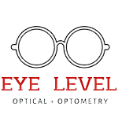
Contact Lenses – What You Need to Know
Contact Lens Wear – What You Need to Know
Be it vision correction or as a style statement, contact lenses are an excellent choice. Contact lenses can be used in daily wear, on a regular basis, or on special occasions. Eye contacts are a great alternative to wearing prescription glasses, and come in a variety of forms. With their variety of options, you can have your pick of the contact lens material, the contact lens design, and even the features they offer. Vision care is a big part of our overall health, and if you are like most who squint in the sun, or work on a screen for extended periods of time – eye contact lenses can be the right option for you.
But before you set your heart on a particular pair of eye contacts, it is important to know more about them before buy contact lenses. For example, there are many soft eye contact lenses, and hard contact lenses. You may even choose to go for light adaptive contact lenses or hybrid contact lenses. What matters the most is the need they fulfill, and what is prescribed or recommended by your optometrist. Prescription contacts or regular can be of different types, here are a few things you should take note of before you buy contact lenses.
What Material Does the Contact Lens Wear Have?
Before getting contact lenses, firstly, you should consider the type of material the eye contacts are made out of. There are numerous types of contact lenses material, here are the main types of contact lens materials.
Soft Lenses
These lenses are made from gel-like, hydrogels. These are water containing plastics, that are very thin and pliable and shapes according to the retina shape. Hydrogel lenses are widely famous and enjoy a lot of popularity. In most cases, they are the prescribed by the eye doctors.
Silicone hydrogel lenses
Speaking of advanced eye contacts, silicone hydrogel lenses are bound to surfaces. These contact lenses are more porous than regular lenses and are considered breathable. With the porous surface, oxygen can easily reach the surface of the eye.
Gas Permeable Lenses
These prescription contacts are rigid lenses that have a similarity to PMMA lenses. They allow the flow of oxygen to the surface of the eye but can be fit much closer to the eye. These eye contacts are great for vision care, and are more convenient than hard lenses.
PMMA Lenses
This vision care eyewear is made of polymethyl methacrylate (PMMA), which is a transparent rigid plastic material. What makes these eye contacts a bit difficult to wear is their lack of porousness, oxygen cannot be transmitted through these lenses making them not ideal for most wearers.
What Design Does the Contact Lens Wear Have?
Be it hydrogel lenses or silicone hydrogel lenses, soft contact lenses come in a variety of design. Here are some of the design options that soft contact lenses have to offer:
Spherical Contact Lenses: These eye contacts are popular because they have the same power throughout the surface of the lens, and are usually used to correct patients with nearsightedness. These types of contact lens wear are also used by people having hyperopia.
Toric Soft Contact Lenses: These eye contacts have different strength in various meridians of the lens. This type of vision care lens is used to correct astigmatism, nearsightedness, and farsightedness.
Multifocal Contact Lenses: When considering to buy contact lenses, you might go for bifocal contacts. These contacts have different strength in the near and far zones of the lens. These are used to correct presbyopia, nearsightedness and as well as farsightedness.
Cosmetic Contact Lenses: These lenses include colors contact lenses, and are used for different purposes. Such as enhancing original eye color or wearing costume related eyewear on Halloween, or at theatricals, or special effect contacts.
Contact Lens Wear – Do’s and Don’t
There are numerous do’s and don’ts that are associated with contact lens wear. As a general principle of guidance, you should apply cosmetics after wearing contacts, and apply eye makeup on the outer most margin of the eye. You should also use a non-oily mascara that doesn’t flake. You should also consider not applying fiber building lash mascara, in case it falls into your eyes and causes irritation. You should prioritize vision care, and clean your eye contacts before and after every use. If you feel irritated or have red or swollen eyes, avoid wearing contact lenses until your eye specialist recommends otherwise.
When considering to buy contact lenses, remember that there are multiple options that can work for you. It is an ideal practice to find one that you like, compare features, and consult a doctor before you make a purchase. Use all authentic materials and only buy for verified retail store. Eye contact lenses are an investment, and you should weigh out all of your options to find what works for you!

